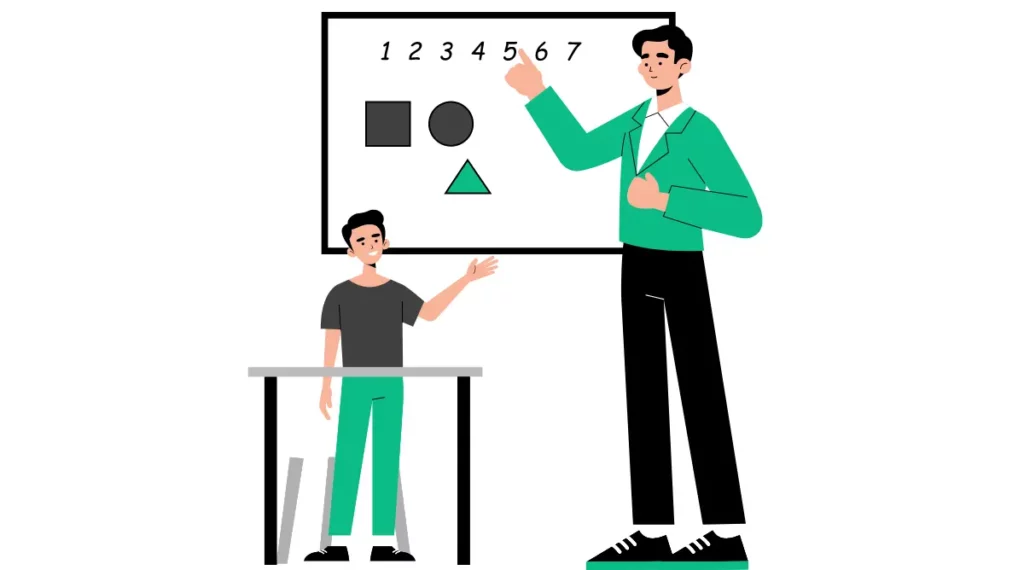GPA to Percentage Calculator
Check out our straightforward guide on the GPA to percentage converter and gain the knowledge you need to excel. Keep reading!
What does GPA mean?

GPA stands for Grade Point Average. It evaluates a student’s academic achievement throughout the semester term or year in an institution. A high GPA indicates a student’s academic ability and can enable the chances of winning scholarships and admissions to graduate programs.
How to convert GPA to percentage?
First, you need to know the grading scale used by your college or university. Most of the institutions use a 4.0 grading scale. On the 4.0 grading scale, the top grade is A+, and the lowest is E/F. To convert GPA into Percentage, you can use the following formula,
Percentage = (GPA/Maximum GPA) x 100
You can also use our GPA to percentage calculator.
Examples of converting GPA into percentage?
For example, your GPA is 3.2 on a 4.0 grading scale. Your percentage will be something like this,
Percentage = (3.2/4.0) * 100 = 80%
So, your GPA, which is 3.2 on a 4.0 scale, equals 80%.
Similarly, if your GPA is 3.7 on a 5.0 scale. You can calculate your percentage something like this,
Percentage = (3.7/5.0) * 100 = 74%
If you’ve already determined your percentage and want to calculate your GPA, you can use our percentage to GPA calculator to obtain 100% accurate result.
What are the differences between a weighted GPA and an unweighted GPA?
Both evaluate a student’s overall academic achievement throughout a course, but they differ in how they calculate the grades.
A weighted GPA is used to evaluate the more clear picture of a student’s academic abilities by assigning additional points to grades for taking more challenging courses. For example, A car going uphill requires more power than a car going downhill. Similarly, an A in an advanced class requires more effort than an A in a regular class, which is why it’s given a higher weighted GPA
In an unweighted GPA, GPA is calculated on a grading scale of 0 to 4.0, and all classes are given equal importance. For example, an A in advanced placement or regular class is given a 4.0.
What is the primary difference between GPA and CGPA?
Both evaluate a student’s performance in a course, but there is a specific difference between GPA and CGPA.
CGPA evaluates the achievement of an individual through the course, including all semesters or terms. The GPA numerically represents a student’s academic standing for a single semester or term.
CGPA is measured by adding all the grade points earned in all semesters or terms and dividing it by the total number of credit hours. Similarly, GPA is calculated by adding all the grade points earned in each semester subject and dividing it by the total number of credit hours during the whole semester or term.
How to improve GPA?
There are a lot of benefits to a high GPA. For example, it raises your chances of qualifying for many scholarships, internships, and job opportunities. But if you have got a low GPA and want to increase the GPA to gain all the benefits, then it’ll require consistency and dedication over time. There are a few tips that can help you improve your GPA:
Attend all classes regularly

One of the essential things in improving the GPA is to attend all the classes regularly. Attending the class regularly has many benefits; for example, you’ll be aware of course material which will help you perform well on exams.
Stay focused and organized
You should be very focused and aware of everything, like assignments, deadlines, exams, etc. You can use tools like Trello, asana, calendars, etc., to keep yourself organized. These tools are very useful and will help you to keep on track.
Surround yourself with students with high GPAs
IIt’sa bit tough to leave the company of your fun making friends, but it’s essential. It’s essential in courses where group study is a must. Working with intelligent people always facilitates discussion. The best way to understand any topic/idea is to discuss it with other smart people around you. So, spend some time with intelligent people with high GPAs.
Set daily/weekly study goals

Whether trying to achieve academic or real-life goals, you should start with small daily, weekly, or monthly goals. To improve your GPA, you should set daily or weekly goals. For example, you know the syllabus of a particular subject/course so you can divide the whole syllabus into different parts and then try to complete a particular part every week. It’ll help you to be consistent and also will help you to cover the whole syllabus before exams.
Submit assignments on time
Assignments are significant in getting extra marks or grade points but might be the reason for grade deduction. Turning in assignments after the due date is like missing a train – you might still be able to catch up, but you’ll have to work harder and might miss out on some opportunities along the way. It would be best to be focused and aware of deadlines to submit assignments on time.
Reach out to instructors when needed

Don’t be shy if you want to improve your GPA. Primarily teachers are available during regular hours for the students. So if you’ve any questions about any particular subject or assignment, feel free to contact the instructor. There are following benefits of doing this:
- It will build your reputation among the teachers/instructors as a hard-working student, which may give you high grades.
- Secondly, it’ll help you understand the problems not clearly explained during the regular classes.
GPA percentage conversion table – 10.0 and 4.0 grading scale
| Grade Point 10.0 | Percentage | Grade | Grade Point 4.0 |
| 8.5 – 10.0 | 85% – 100% | A+ | 4.0 |
| 8.0 – 8.4 | 80% – 84% | A+ | 3.7 |
| 7.5 – 7.9 | 75% – 79% | B+ | 3.3 |
| 7.0 – 7.4 | 70% – 74% | B | 3.0 |
| 6.5 – 6.9 | 65% – 69% | B- | 2.7 |
| 6.0 – 6.4 | 60% – 64% | C+ | 2.3 |
| 5.5 – 5.9 | 55% – 59% | C | 2.0 |
| 5.0 – 5.4 | 50% – 54% | C- | 1.7 |
| 4.5 – 4.9 | 45% – 49% | D | 1.3 |
| 4.0 – 4.4 | 40% – 44% | D | 1.0 |
| 0 – 3.9 | 0 – 39% | F | 0 |



